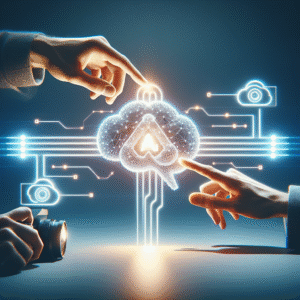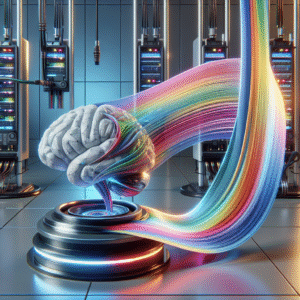Have you ever wondered how your voice-activated assistant understands you so well? Natural Language Processing (NLP) is the technology behind this marvel, and its future is poised to change the way we interact with machines.
Understanding Natural Language Processing (NLP)
At its core, Natural Language Processing is a branch of artificial intelligence aimed at making sense of human language. I remember when I first encountered NLP while reading about machine learning. I was fascinated by how computers can analyze unstructured data, like text and speech, to extract meaning and context. It’s remarkable how far we’ve come since the early days of computing, where machines struggled to interpret even the simplest of commands.
The Historical Context of NLP
To appreciate where NLP is headed, it’s useful to glance back at its history. Early attempts at NLP were rudimentary, primarily involving rule-based systems and limited vocabularies. I often think about how these simple beginnings paved the way for the sophisticated models we have today, like those used in Google Translate and chatbots.
In the late 20th century, statistical methods started replacing rule-based approaches. It was around this time that the concept of machine learning entered the scene. My excitement grew as I learned about how algorithms began to learn from vast amounts of data, improving their ability to understand and generate human language.
Milestones in NLP Development
Recognizing key milestones can help illuminate the evolution of NLP. Here are a few significant ones:
| Year | Milestone |
|---|---|
| 1956 | The Dartmouth Conference launched AI as a field. |
| 1980s | Introduction of statistical models in NLP. |
| 2013 | Word embeddings (like Word2Vec) revolutionized semantic understanding. |
| 2018 | The release of BERT transformed understanding of context in language. |
Each of these milestones has contributed to a more nuanced understanding of language by machines. As I learned about BERT (Bidirectional Encoder Representations from Transformers), I couldn’t help but marvel at its ability to consider context from both directions, rather than just sequentially.
Applications of NLP Today
Today, NLP holds applications across various sectors. I find it exciting to see how this technology is woven into the fabric of our daily lives. From healthcare to entertainment, NLP enhances how we interact with technology.
Customer Service Automation
One of the most prominent applications is in customer service. I’ve spoken to numerous chatbots while attempting to troubleshoot an issue, and it’s incredible how these AI systems can provide support 24/7.
Benefits of Chatbots
- Efficiency: Chatbots can handle multiple inquiries simultaneously.
- Cost-effective: They reduce the need for large customer support teams.
- Availability: They provide assistance outside regular business hours.
Language Translation
NLP has also made strides in language translation. I still remember the first time I used Google Translate. It astonished me how it could take a sentence in one language and deliver a coherent translation in another.
Advantages of Automated Translation
- Speed: It translates text almost instantaneously.
- Accessibility: It breaks down language barriers, making information accessible to more people.
- Consistency: Automated translation offers a level of consistency that manual translation sometimes lacks.
Sentiment Analysis
In the realm of social media and marketing, sentiment analysis powered by NLP enables businesses to gauge public opinion. It’s fascinating how algorithms can analyze countless posts and comments to identify the overall sentiment towards a product or brand.
How it Works
- Data Collection: Algorithms collect data from various sources like social media and product reviews.
- Natural Language Understanding: These systems analyze the text to determine sentiment (positive, negative, or neutral).
- Insights Generation: Businesses can use this data to refine their strategies.
The Future of NLP: Emerging Trends
As I contemplate the future of NLP, several exciting trends come to mind. These advancements promise to enhance the quality and efficiency of human-machine interactions even further.
Improved Contextual Understanding
One major trend is the continual improvement in contextual understanding. Current models, like GPT-3, already display remarkable capabilities, but researchers are working tirelessly on enhancing this even more. I often think, what will it be like to converse with machines that completely grasp context in a human-like manner?
Multimodal Processing
Another fascinating development is multimodal processing, where models can analyze and generate information across various types of data—text, images, and even sound. I picture this as a world where I can communicate with machines using a combination of speech and gestures, leading to a more intuitive interaction.
Personalization
Personalization is on the rise as well. Imagine an assistant that learns my preferences over time and tailors its responses and suggestions accordingly. This idea excites me because it transforms a generic interaction into something that feels truly unique.
Ethical Considerations
As I think about the future, ethical considerations regarding NLP continue to surface. The more we rely on AI to process human language, the greater the responsibility to ensure these systems align with ethical guidelines.
Implications of Bias in NLP
- Data Representation: If the training data is biased, it can lead to skewed outputs.
- Accountability: Developers need to ensure transparency in how these models operate and make decisions.
Challenges in NLP
While there is a lot to look forward to, challenges still exist in the realm of NLP. I often reflect on how addressing these hurdles is crucial for the technology’s advancement.
Ambiguity of Human Language
One of the significant challenges is the ambiguity and nuances of human language. Sarcasm, idioms, and cultural references can trip up even the most advanced algorithms. I remember trying to teach a bot about humor, only to realize how complex it can be.
Resource Limitations
Many NLP models require massive amounts of data and computational power. As I’ve learned, this can be a barrier for smaller organizations and startups wishing to utilize NLP technology effectively.
Real-time Processing
Real-time processing is another hurdle. In many applications, users expect instantaneous responses. Balancing speed and accuracy is a challenge that developers continuously strive to overcome.
Conclusion: Navigating the Future of NLP
As I wrap up my thoughts on the future of Natural Language Processing, I can’t help but feel a sense of anticipation. The journey from simple rule-based systems to complex AI that can understand and respond to human language has been monumental. I find it thrilling to think about the possibilities that lie ahead.
In considering how NLP will further evolve, I believe the ongoing advancements will shape not just technology but also how I engage with the world around me. Whether it’s through improved customer service, enhanced language translation, or personalized interactions, the potential for NLP to enrich our lives is vast and promising.
With a blend of excitement and curiosity, I look forward to witnessing how these trends unfold and how we can harness the power of NLP to foster more meaningful connections between humans and machines. Each step forward represents an incredible opportunity to make technology more intuitive and accessible, setting the stage for a future where communication knows no barriers.






